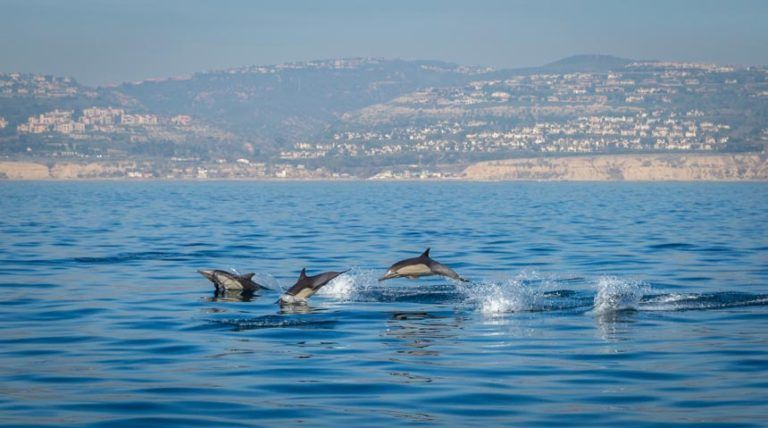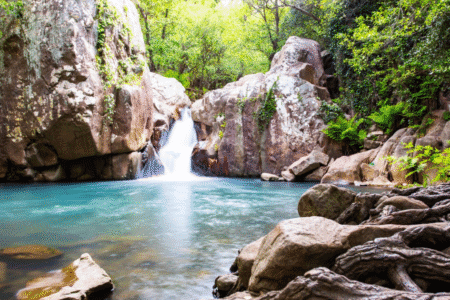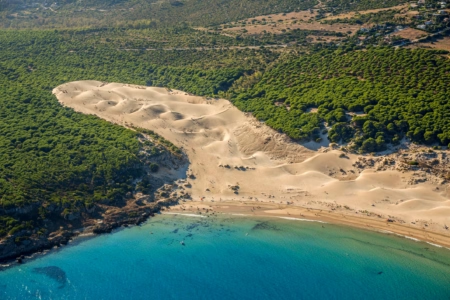Why Tarifa is special for birdwatching
Tarifa, at the southern tip of Europe, is not only known for its winds and beaches. It's also one of the best places in the world for whale watching thanks to its strategic location in the Strait of Gibraltar.
In this maritime corridor, the waters of the Mediterranean and the Atlantic intermingle, creating a unique ecosystem that is home to diverse species of cetaceans year-round.
In winter, whale-watching excursions have a special charm. The waters are calmer and the groups are smaller, ensuring an intimate and authentic experience.
Watch our video experience here!
Winter Season: What species can you see?

Winter is ideal for spotting dolphins and pilot whales. Some of the most common species you can see during this time include:
Common dolphins
They are playful and often swim alongside boats.
Bottlenose dolphins
Known for their size and sociable behavior.
Pilot whales
Common in the Strait, they usually travel in family groups.
Although less frequent, it is also possible to see orcas and sperm whales in these waters.
Ideal conditions in winter:
- Less maritime traffic.
- Calmer waters due to moderate winds.
- Pleasant temperatures make the experience a pleasure.
What you need to know before the excursion
To fully enjoy your sighting, it is important to be well prepared.
How to choose a reliable company:
- Choose local companies with sustainability certifications, such as Turmares or Firmm.
- Make sure the boat has guides who are experts in marine biology.
What to bring:
- Comfortable and warm clothing (winds on the high seas can be cold).
- Sunscreen and sunglasses, even in winter.
- Camera or binoculars to capture details.
Practical tips:
- Please book in advance, as places are limited in winter.
- Check the weather forecast to avoid motion sickness.
The Offshore Experience: What to Expect
The sighting begins with a brief briefing about the species you might encounter and the rules of conduct on the high seas. During the tour, which typically lasts between two and three hours, the excitement increases when you see the first pods of dolphins jumping next to the boat.
Tour Highlights:
- The excitement of seeing cetaceans in their natural habitat.
- Detailed explanations from expert guides on the behavior of the species.
- Stunning views of the Strait of Gibraltar and the African coast in the background.
Complementary activities:
- Identification of seabirds such as gannets and gulls.
- Explanation of the interaction of cetaceans with the maritime environment.
Conservation and sustainability
Whale watching in Tarifa is not only a tourist activity, but also an opportunity to promote conservation. Local companies operate under strict regulations that guarantee respect for the animals.
Sustainability standards
- Maintain a minimum distance from cetaceans.
- Reduce boat speeds to avoid stressing the animals.
- Do not throw garbage into the sea.
By participating, you'll be contributing to the local economy and supporting the protection of these species.
Safety Tips
Although it is a safe activity, it is important to keep in mind the following recommendations:
- Follow the instructions of the captain and guides at all times.
- Use life jackets if required.
- If you tend to get seasick, take a natural or pharmaceutical remedy before boarding.
Cultural and educational aspects
In addition to the natural spectacle, whale watching has an educational component. Guides often share fascinating facts about the species observed and the geography of the Strait of Gibraltar, a strategic location for marine biodiversity.
You will learn about:
- Cetacean migrations and their relationship with ocean currents.
- Threats such as pollution and maritime traffic.
- Conservation efforts at the local and international levels.
Frequently asked questions about whale watching
Is it possible to spot cetaceans on any winter day?
Although the activity depends on the weather, winter excursions have a high probability of success.
Are there any restrictions for children or the elderly?
No, it is an activity suitable for all ages, although it is important to consult with the organizing company.
What happens if no cetaceans are seen during the excursion?
Some companies offer to repeat the experience at no additional cost.
Is it safe for animals?
Yes, companies follow strict regulations to avoid disturbing cetaceans.
How much does a whale watching excursion cost?
Prices vary, but are usually between 30 and 50 euros per person.
Is it necessary to have previous experience?
No, the guides explain everything you need to enjoy the activity.










